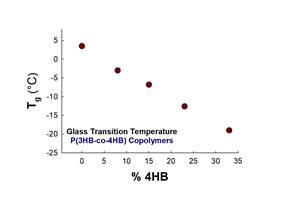Can’t Sell Your New Recycling Concept?
Put It into Production Yourself!
Salyp N.V. in Ypres, Belgium, developed a dry mechanical sorting process for auto shredder residue over the past eight years. The R&D firm built a full-size plant in hopes of selling it to a scrap dealer but found no takers. Owner Omer Saelens and other company managers decided they had no choice but to operate the plant themselves.
Saelens and his colleagues—consisting only of managers and engineers—transformed themselves from inventors and entrepreneurs into full-time day-shift plant operators. They perform all the manual labor of feeding in loads of shredder waste and unloading batches of separated materials. And like any other crew of operators the world over, when things are running smoothly, they catch a quick game of poker at lunch.
Maverick approach
To the extent that there is any conventional wisdom in recycling auto shredder residue (there’s only one other commercial ASR recycler in the world—Galloo Plastics in neighboring Halluin, Belgium), it is that ASR requires some form of wet separation in altered-density media. Salyp ignores this “rule”: It uses no water except for a secondary step to wash urethane foam so that it can be reused in carpet backing. Salyp’s dry mechanical separation process doesn’t yield pure product, but “product-enriched” streams—copper-rich, iron-rich, plastic-rich, and fiber-rich—all of which have steady markets. Salyp did develop a heat-based resin-separation unit that can produce pure plastic streams, but it sits idle. Instead, Salyp sells its mixed plastics to recyclers who separate and compound it themselves.
Salyp’s technology converts ASR into seven fractions: 3% clean PUR foam, 10% iron-rich material, 9% copper-rich (including other nonferrous metals and glass), 44% organic and fiber materials for fuel, 2% wood for fuel, and 18% mixed plastics. That amounts to 86% by weight recoverable products plus 14% dust and leftover waste that is landfilled.
The process starts with a trommel—a cylindrical, revolving screen—that separates ASR particles into three sizes: 0 to 12 mm (metal and glass), 12 to 50 mm (plastics and fibers), and larger pieces of foam and plastic.
Foam passes on a conveyor belt through a metal separator and then is sorted from rigid plastics with a mechanical device developed by Salyp with Central Material Handling Systems in Groveland, Ill. This device compresses the foam between two rollers turning at different speeds. As foam is released, it springs back and bounces up, allowing it to be blown off the belt. That compression and release also loosen dirt in the foam, enhancing the effectiveness of a subsequent wet washing process developed by Argonne National Laboratory, Argonne, Ill.
The 0-to-12 mm fraction travels past magnets to remove ferrous metals. It then goes through Dry Gravity Separation, a technique from Fren Erschiessungs-u. Bergbau in Leoben, Austria. It combines vibration and air to separate by density.
The 12-to-50 mm fraction starts with mechanical “defibering” equipment developed by Salyp to separate fibers from rigid plastics. The fiber-rich fraction (still containing some plastic) is ground and goes through a second Fren DGS separator to remove the fibers, which are sold for fuel, from the plastic, which is sieved to remove any copper.
Meanwhile the plastic-rich stream from the 12-to-50 mm fraction is shredded and further separated into ferrous metals, non-ferrous metals, a wood-rich fraction that is removed by color sorting (it’s brown), and a plastic-rich stream. All four fractions are recovered.
Innovation into cash
Engineers and managers at Salyp man the machines one shift, five days a week. They process 50 tons a day of ASR and are hiring more operators, so that in June it will move up to five-day/24-hr operation.
Salyp is paid by auto shredders to take the ASR, just like a landfill. Fees are high in Europe, so the equipment paid for itself in less than a year. In the U.S., payback might take two years.
Salyp still wants to sell its machinery to other reclaimers. It just sold its first license for ASR recycling technology to a leading Italian waste handler. It is expected to be operational next year.
Related Content
Compatibilizers Aid Recycling & Upcycling of Mixed Resins
Compatibilizers are proving their worth in boosting critical properties such as impact/stiffness balance of PCR and PIR blends of polyolefins and other plastics.
Read MorePregis Performance Flexibles: In the ‘Wow’ Business
Pregis went big and bold with investment in a brand-new, state-of-the-art plant and spent big on expanding an existing facility. High-tech lines, well-known leadership and a commitment to sustainability are bringing the “wow” factor to blown film.
Read MoreFilm Extrusion: Boost Mechanical Properties and Rate of Composting by Blending Amorphous PHA into PLA
A unique amorphous PHA has been shown to enhance the mechanical performance and accelerate the biodegradation of other compostable polymers PLA in blown film.
Read MoreHow to Extrusion Blow Mold PHA/PLA Blends
You need to pay attention to the inherent characteristics of biopolymers PHA/PLA materials when setting process parameters to realize better and more consistent outcomes.
Read MoreRead Next
Troubleshooting Screw and Barrel Wear in Extrusion
Extruder screws and barrels will wear over time. If you are seeing a reduction in specific rate and higher discharge temperatures, wear is the likely culprit.
Read MoreLead the Conversation, Change the Conversation
Coverage of single-use plastics can be both misleading and demoralizing. Here are 10 tips for changing the perception of the plastics industry at your company and in your community.
Read More























